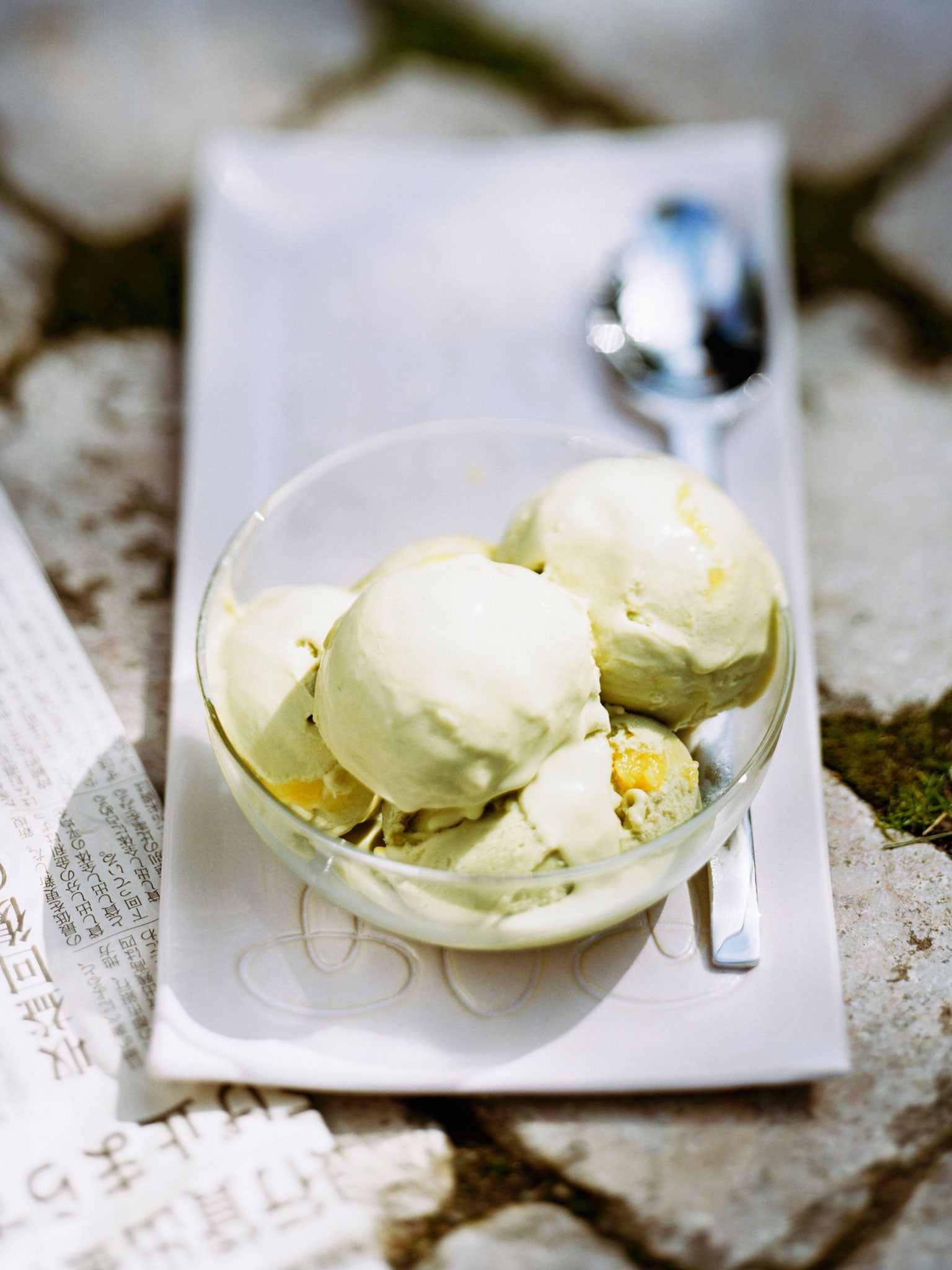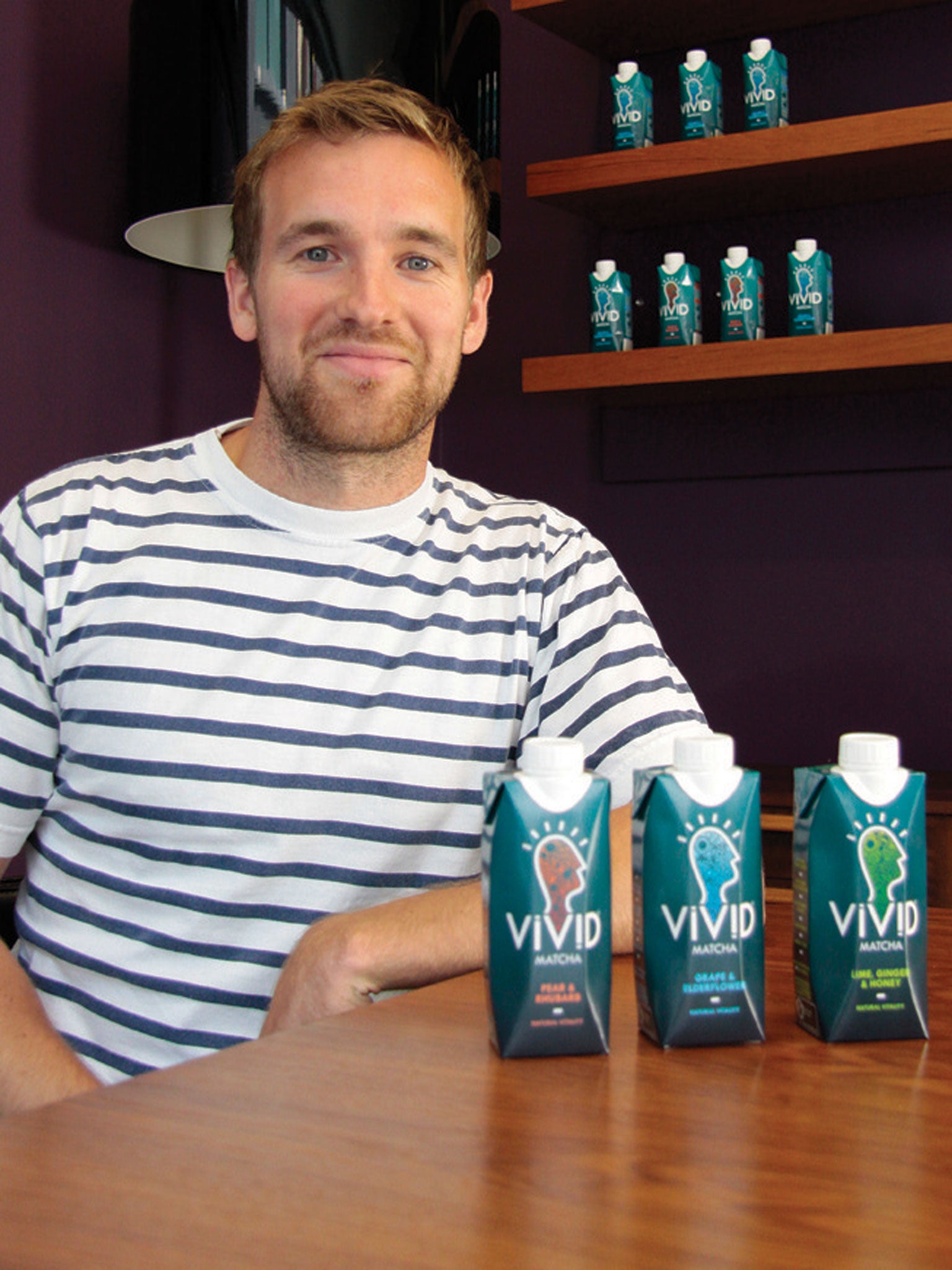Matcha the day: Heard about the soft drink that's set to be the next big thing?
Buddhist monks certainly have – they've been enjoying this green tea for 1,000 years. Clare Dwyer Hogg charts its journey from temple to chiller cabinet
Your support helps us to tell the story
This election is still a dead heat, according to most polls. In a fight with such wafer-thin margins, we need reporters on the ground talking to the people Trump and Harris are courting. Your support allows us to keep sending journalists to the story.
The Independent is trusted by 27 million Americans from across the entire political spectrum every month. Unlike many other quality news outlets, we choose not to lock you out of our reporting and analysis with paywalls. But quality journalism must still be paid for.
Help us keep bring these critical stories to light. Your support makes all the difference.
If you've never had a drink of matcha before, there's a good chance those days are numbered. It's being marketed as the next big thing, and to consumers hungry for ways of getting healthy without doing anything too radical, it fits the bill.
Lauded for being high in antioxidants (containing around 130 times more than an average cup of green tea), it also has caffeine and the amino acid L-theanine, which is a mood-booster and said to strengthen cognitive ability. Particular to green tea, L-theanine is sold as a stress reliever in Japan; what makes it good news for caffeine-junkies is that it reacts with the caffeine to release it slowly into your system.
So why aren't we all glugging it? In Japan, matcha is pretty standard: iced versions are fridge staples in the summer, and the bright-green powder is used to flavour sweet treats such as ice-cream and smoothies. But in the UK, it costs £25 for 30g. Which explains why, until recently, it was the preserve of health-food aficionados, foodies and gym bunnies. They would buy matcha from health-food shops and specialist tea-importers.
At home, they'd sprinkle it on fruit, mix it in yoghurt, whisk it into frothed milk or make it into tea. They would do this firmly in the knowledge that they had the weight of history to validate their investment: matcha was drunk centuries ago by Buddhist monks, and used in tea ceremonies by 13th-century Japanese Samurai warriors, who practised Zen Buddhism and enjoyed the prolonged energy boost.
With this history, there's something a bit crazy about calling matcha the latest fad. But it became inevitable when Starbucks introduced an Iced Green Tea Latte to its menu (with a chirpy "did you know?" fact about matcha's 1,000-year history). It was only a matter of time before somebody new came to corner the market and make it their mission to get everyone drinking it. That person is James Shillcock, a young entrepreneur who has a background in tea, and an ambition to brand matcha in the way that coconut water has been branded by other ultra-trendy companies.

He launched Vivid, the UK's first matcha and fruit-blended drink, in August. At a price of £1.85 for a 330ml carton, it's much more accessible to the casual consumer, and it fits into what the industry calls the RTD – ready to drink – category, a lucrative corner of the non-alcoholic drinks market. It has already won the Innovation Challenge Gold award, and the list of stockists queuing to sell his product reads like a blueprint for success. For aspiration: Harvey Nichols and Selfridges now have it on their shelves. For health credibility: Whole Foods, Planet Organic. Niche appeal: 150 independent retailers in London so far, and counting.
"I keep reminding people this is not a fad," Shillcock tells The Independent on the telephone from the conference WIRED 2013, where Vivid is the official drink (this itself is a significant stamp of approval: WIRED prides itself on promoting cutting-edge thinking and says it aims to "showcase the future").
"Matcha is green tea," Shillcock says. "Just a powerful concentrate of it." He is careful, he says, about over-promoting the health benefits, but is confident that the properties of the matcha leaf don't need to be exaggerated. "I am very comfortable saying one carton contains 10 times the amount of antioxidants of one cup of normal green tea," he says firmly. What he is keen to emphasise is the sustained energy matcha can bring. "It releases the caffeine slowly into the blood-stream: so while with coffee, you get a high and a low, matcha gives a sustained mood boost." It is, he says, for anyone who needs to focus – which is probably pretty much anyone – and who wants a healthy lifestyle but is stuck at a desk.
This isn't too much of a wild claim: as might be expected, actual nutritional information is very difficult to discern. Dr Glenys Jones, a nutritionist and spokeswoman for the Nutrition Society, says that "robust scientific analysis of samples would be needed to accurately determine the antioxidant and amino acid content of a particular tea, as factors such as plant age, location and drying process would all affect the levels of these". Evidence would be needed, she says, to show that these are actually absorbed by the body. "Also, you are most likely to need to consume large amounts to get any appreciable intakes of any of the antioxidants or amino acids."
However, most consumers aren't thinking along those robust scientific lines. Instead, a pervasive desire to live healthier, happier lives without making radical changes means we are much more susceptible to investing in miracle juices that come in Tetra Paks.

Shillcock's main hurdle, he confesses, was how matcha tastes: incredibly bitter in its raw form, it's not for everyone. Which is a quite a big issue when you're setting up a matcha drinks business. But the Vivid drinks come blended – that's how Shillcock says he drinks matcha at home – with some fruit juice, and are kept natural, with no added sugars. The results (lime, ginger and honey, grape and elderflower, pear and rhubarb) are tasty. And the branding is clever. Your little packet tells you on the side that it has been a "pure powder prized for centuries by Buddhist monks for focus during meditation. We've captured their wisdom and locked it tight in this carton".
Alan Bhukka Smith laughs when he hears this description. A Zen Buddhist monk based in Manchester, he didn't realise the wisdom he spent 22 years learning could be bottled. He is keen on matcha, though, and fondly remembers his Zen teacher drinking it. "He loved matcha tea," he says. "He used to whisk it with a bamboo whisk that looked like a shaving brush and stir it with a bamboo stick."
Central to Buddhist tea ceremonies, participants drink tea from the bowl, rotate it three times and pass it on. Last month, Bhukka Smith participated in a tea ceremony in the Fo Guang Shan Buddhist temple in Manchester, part of a tour that Taiwanese monks are making throughout the UK. "At least 100 people, six to eight people at a table, were there," he says.
The tea was served to music, while the drinkers practised meditation, looked at calligraphy and listened to a dharma talk about "the mind of tea". When pressed to condense the talk into Tetra Pak size, Bhukka Smith explains: "The water for the tea comes from the clouds. When we drink tea, we're drinking clouds."
Surely that is by far the most appealing reason to drink matcha tea.
Mix and matcha: Other ways to try it
Lemonade
The slightly bitter taste of green tea gives regular lemonade a rather grown-up twist. And, because of matcha's caffeine content, blended with lemonade it can be used as a refreshing alternative to coffee.
Chocolate
Plenty of luxury chocolate companies are combining matcha with chocolate (usually white) to provide a unique and exotic flavour. Its high price, however, has led some fans to recreate it at home.
Biscuits
There are plenty of matcha-flavoured biscuits available, but some brands are getting experimental using it as an ingredient alongside cranberries, chocolate chunks and raisins.
Syrup
Add emerald matcha syrup to beverages to inject a hit of antioxidants, as well as a distinctive flavour, to lattes, smoothies or cocktails.
Join our commenting forum
Join thought-provoking conversations, follow other Independent readers and see their replies
Comments